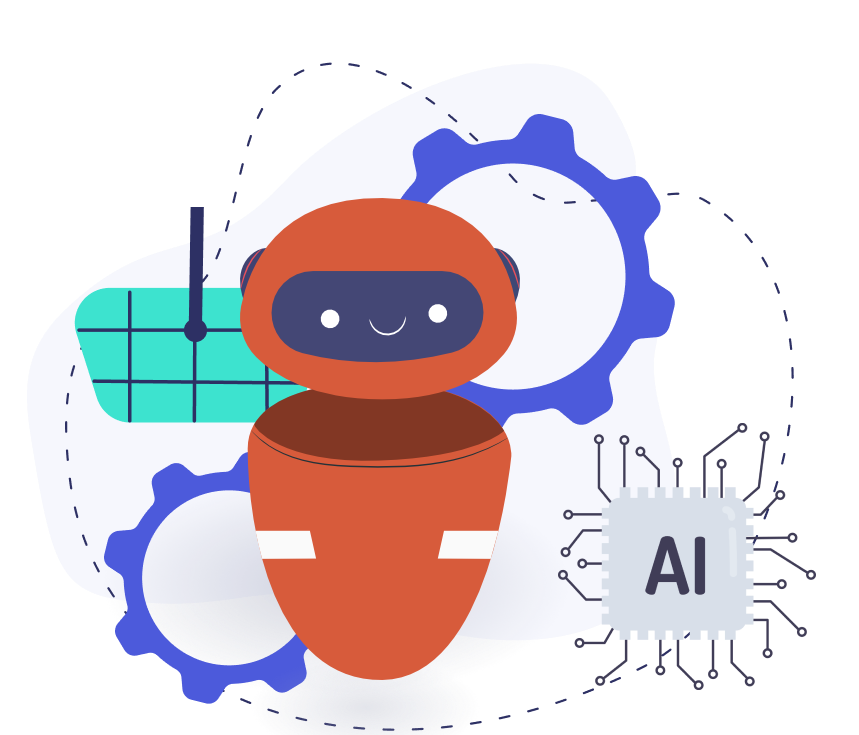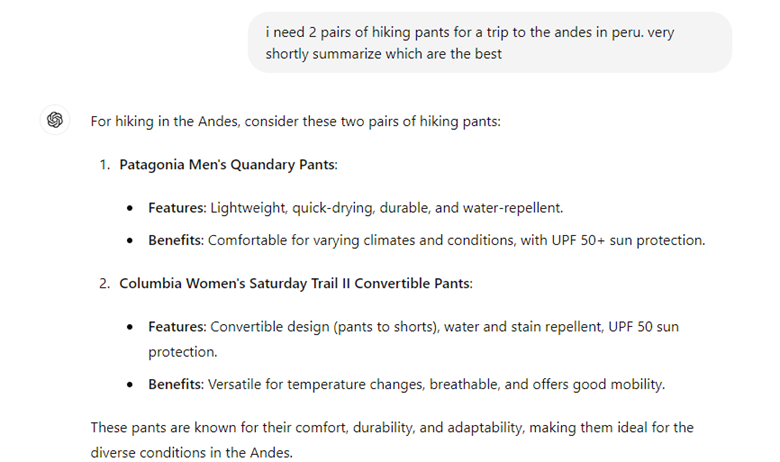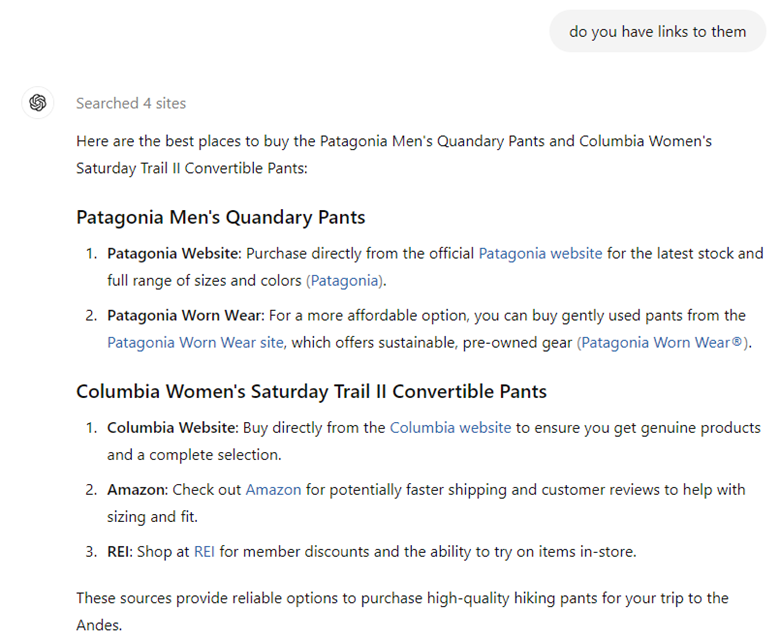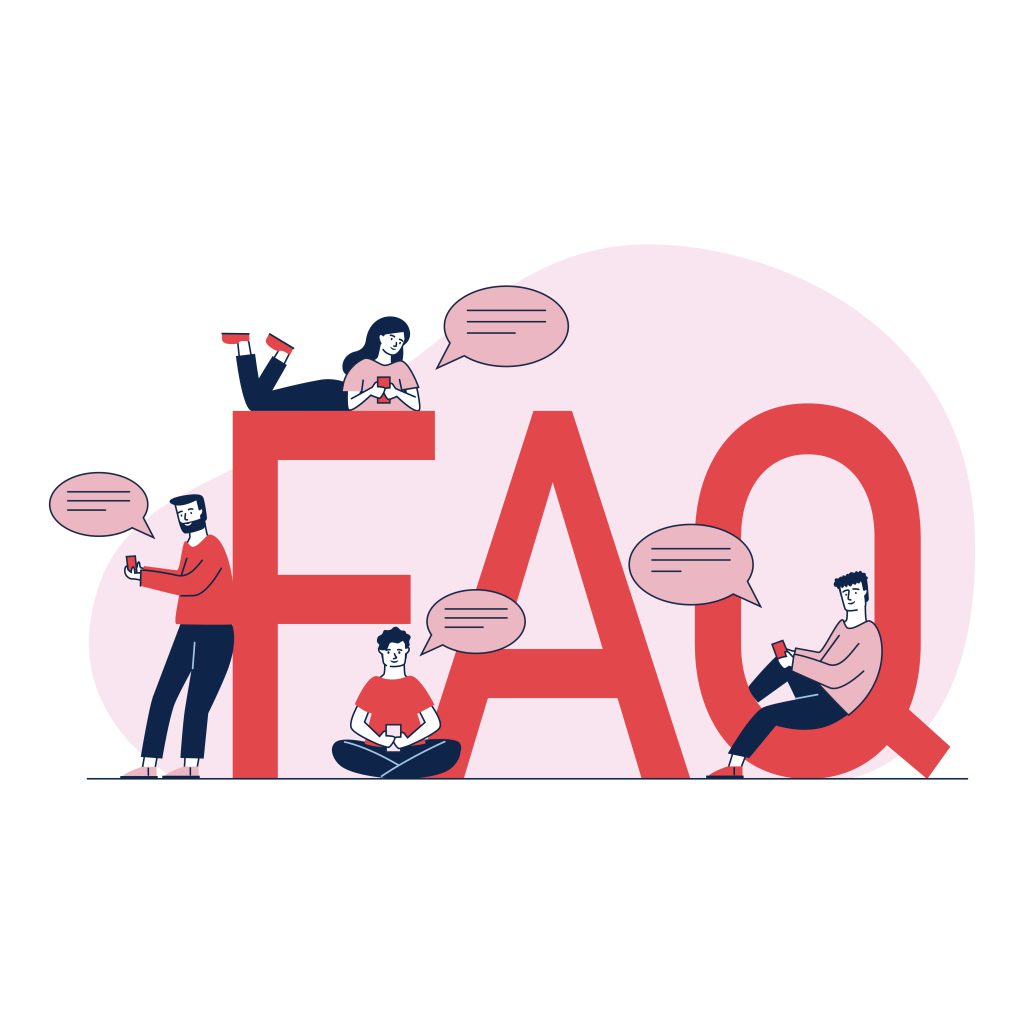E-commerce product discovery for GPT: 6 ways to optimize your online store
No wonder ecommerce retailers are starting to think about how they can surface their products to potential customers asking ChatGPT for product recommendations. Getting relevant products in front of this audience can be a game-changer for business, so it’s important retailers start optimizing their online stores and content to be AI search tool friendly.

It’s not hard to imagine a future where online shopping goes something like this:

While ChatGPT can recommend products by name, which shoppers can then go search online; it can also provide links directly to online stores, helping the product discovery process:

Having ChatGPT recommend links to products listed directly in your E-commerce store can be an important channel for Ecommerce product discovery and increase your conversion rates and overall customer satisfaction.
We’ll dive into the concrete things you need to do to optimize your online store for product discovery for AI search, but don’t forget to start with the basics – building your brand reputation.
I asked ChatGPT why it selected those specific links and here’s what is said:

So while you’re building your brand reputation, here are some more granular steps to optimize online product discovery for ChatGPT. Let’s get started!
1. Detailed Product Data
When optimizing your E-commerce store for product discoverability on GPT-like search tools, you need to make sure your product data is rich and structured correctly.
Currently, ChatGPT only provides answers in text format (no images), so when thinking about how to make your products appear there, focus on the following:
Metadata and Attributes
You already know the importance of keeping your product data up-to-date. It’s also essential in this context.
To surface products on ChatGPT, make sure each product has comprehensive metadata: product details, availability, categories, tags, and all available attributes (for example: size, color, brand, material).
Be sure to include multiple high-resolution images with detailed alt text so AI systems can understand all the information on the product page.
Use Structured Data
Make sure your data is structed in a way that AI systems (likeChatGPT) can read. JSON-LD is a common schema markup.
Doing this helps ChatGPT understand all of the products’ details.
2. Natural Language Processing (NLP) Optimization
You need to optimize your product listings for natural language processing, too. Think about how people use generative AI tools and how conversational they are. This type of information, and style, should be mirrored in your product metadata.
Keyword Management
You can do this by adding natural language keywords and phrases to product categories or product tags. Think about what people are likely to search for in relation to this product. Even better, think about what they might be asking ChatGPT in order to for it to return this specific product.
If you need some inspiration, you can always ask ChatGPT for guidance and use that as direct input.
Synonym Management
As an online retailer, you already know the importance of synonym management. Relevant and thorough synonym work is also important when optimizing product discoverability for ChatGPT.
When thinking of what (natural) keywords to add to your product description and tags, be sure to add synonyms to have comprehensive coverage across a wide range of search intent.
Conversational Phrases
When creating product descriptions, write them in a conversational tone, so it fits in with ChatGPT’s style.
This gives you a better chance of being picked up and directly used by the algorithm.
If you already have comprehensive product descriptions and not many resources to re-write them, directly use ChatGPT to do so.
3. Content Strategy & Optimization
The more conversational-style text you have on your E-commerce store, the better for surfacing products for ai search engines.
Think back to the first example here, where I asked it for hiking pant recommendations. The final sentence in ChatGPT’s answer is most likely a summarization of user reviews and FAQ answers.

Conversational Content
FAQs and buying guides are great places to start when creating ChatGPT-favored content both about your brand and specifically about your products. You can also create blog posts and product comparisons to help ChatGPT and your shoppers decide which products to buy.
ChatGPT can use this conversational information to elaborate on your products in a wider range of conversations.
Product Reviews
You already know user reviews are important in helping shoppers decide on which products to buy.
These shopper reviews of products might also be one of the most important aspects to include in your E-commerce store as this content can be used to enhance product descriptions and answer questions shoppers ask ChatGPT.
You can also leverage AI to summarize reviews on specific products, to condense them to 1-2 sentences including pros and cons, to make hundreds of reviews easily digestible for shoppers.
Consistent Formatting
Keep consistent formatting throughout your website so ChatGPT can predictably find relevant information. To do this, use clear headers and bullet points to break up content wherever possible.
4. API Integration
After you’ve put in so much work enriching your product data, getting shopper reviews, and creating conversational-style content, you need to make sure ChatGPT can actually access all that information
You need to provide an API that ChatGPT can access in order to pull all of this information in real-time to make sure it can reflect current availability and pricing.
5. SEO Best Practices
You’re already using SEO to improve product discovery on the web, the same principles apply in this context.
Make sure to focus on the following areas to make your products discoverable on ChatGPT:
On-site SEO: Make sure you optimize traditionally important on-site elements such as: titles, meta descriptions, headings, and URLs for relevant keywords.
Tools like Ahrefs, Semrush, SimilarWeb, and other alternative platforms to SimilarWeb can help you analyze keyword performance, track competitors, and identify traffic sources.
Link building: Cross-link your internal pages by connecting products and related content to improve navigation. Also, build backlinks from external websites with a high Domain Ranking. This helps build your site’s credibility with search engines.
To streamline your link building efforts, consider using tools that can automate the process. By incorporating smart strategies, you can enhance your site’s link profile while saving time. For example, you can use link building automation software to simplify the identification of high-quality backlink opportunities. This approach helps you scale your efforts and achieve more impactful results in less time.
Loading times and site optimization: Your site should load quickly in order to provide a great browsing experience in addition to improving your SEO. To do this, make sure you optimize your mobile site and follow search best practices for mobile devices.
6. Work with ChatGPT or AI Developers
Working with an expert in the field can help you uncover areas to optimize or help you solve more technical challenges.
These developers can help you figure out how ChatGPT interacts with your product data and which issues are most pressing. They can also help you provide anonymized data to help ChatGPT better understand your product catalog and how it relates directly to shopper queries.
Conclusion
Shoppers will soon use ChatGPT to discover products, so retailers need to start thinking about ChatGPT as another avenue of product discovery to lift customer experience and boost customer loyalty.
By focusing on the strategies outlined above, E-commerce retailers can make their product catalogs and content discoverable by ChatGPT and gain a competitive edge.
This is just the beginning of conversational commerce; retailers can ride the wave further by offering their own ChatGPT-like chat-bot on their online store. Start diving into conversational commerce here.


